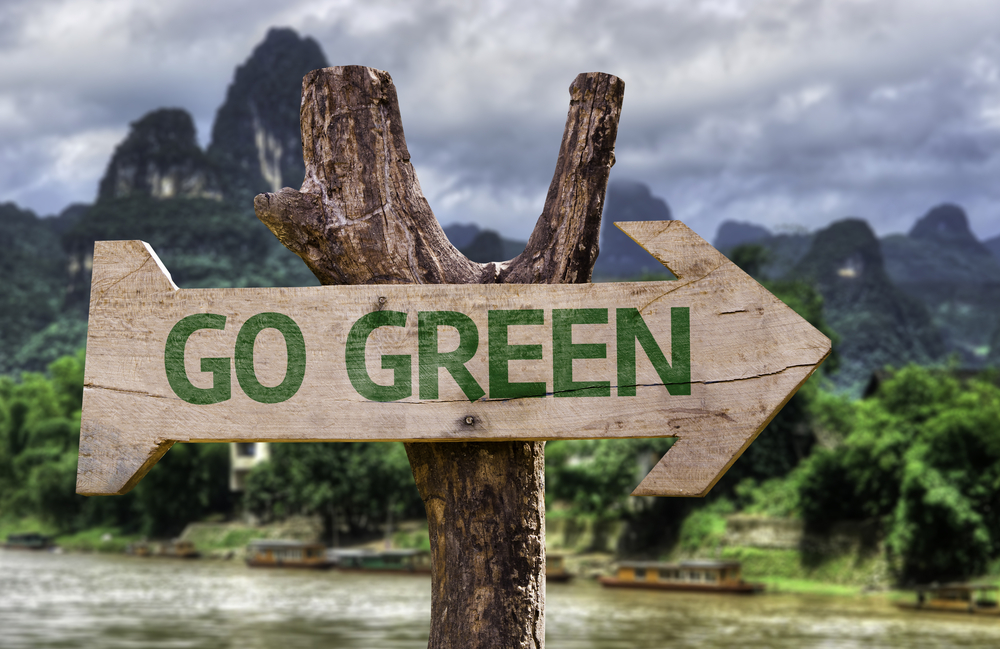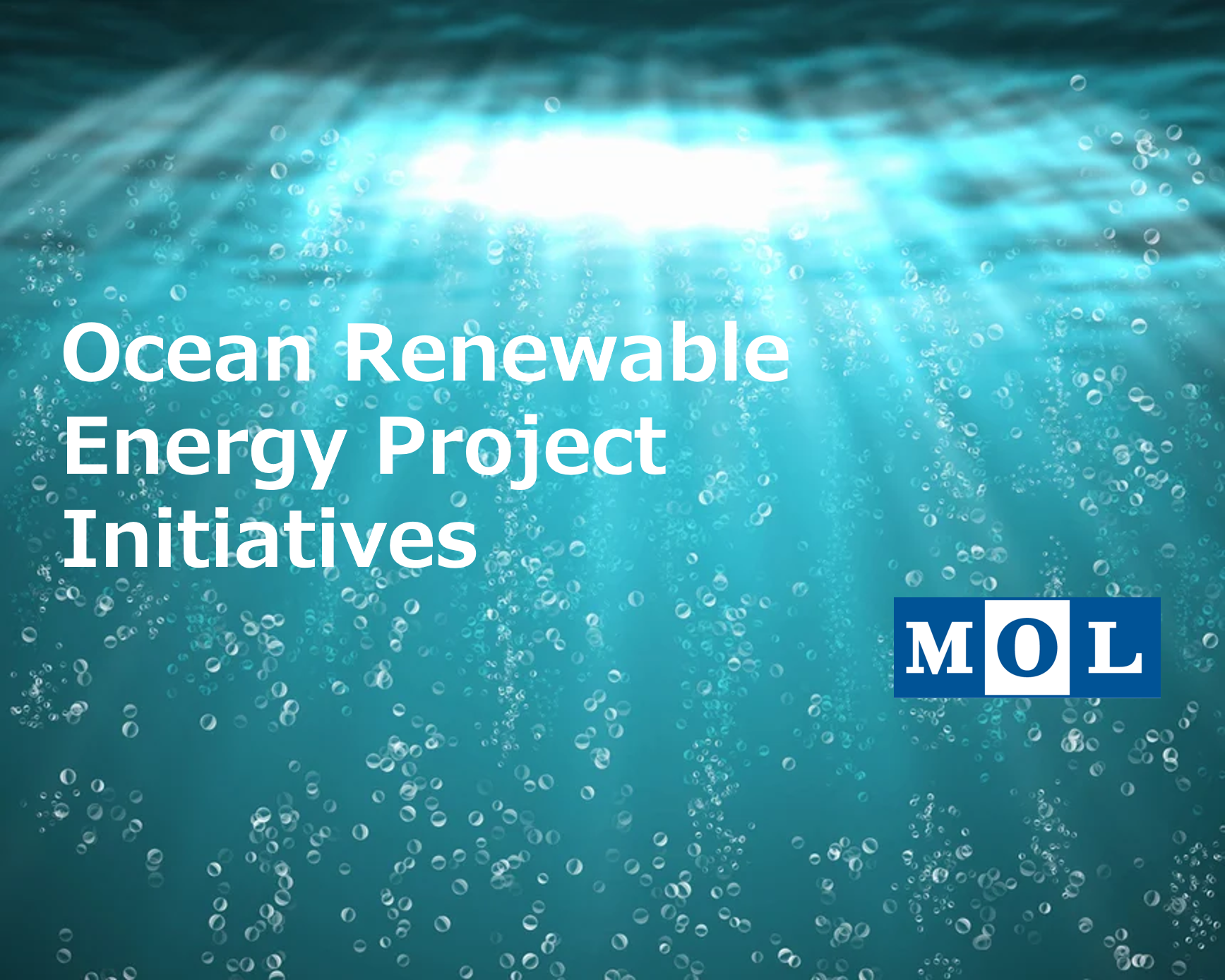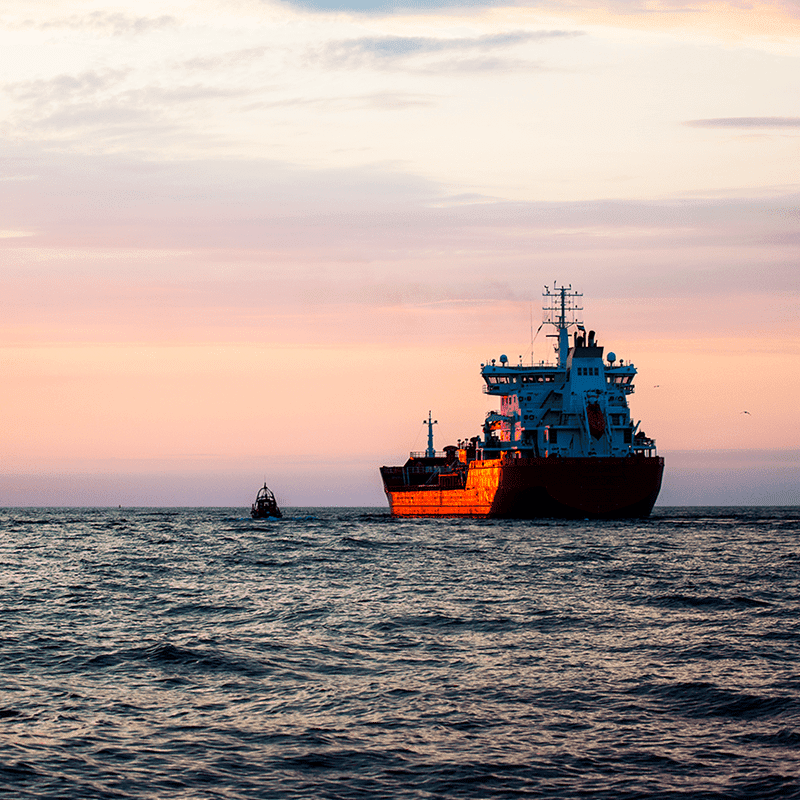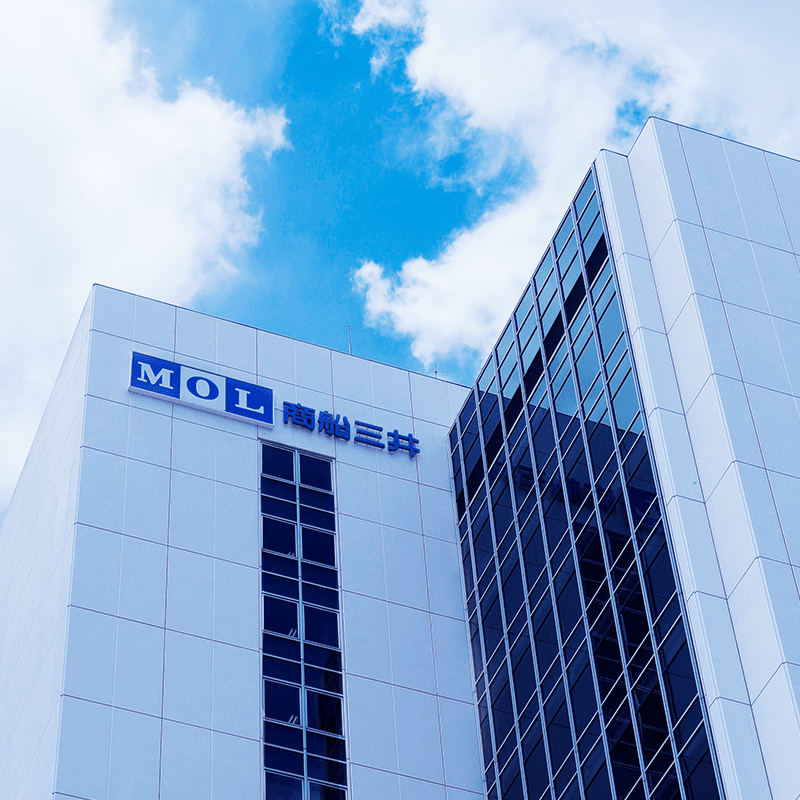BLOG
(Updated) Reuse of CO2: Environmental Circulating Model “Methanol Story"
- Eco Friendly
2024.05.28
Methanol has attracted attention as an environmentally friendly fuel because it reduces CO2 (carbon dioxide) emissions by 10~15% compared with heavy oil and emits no sulfur oxides. In this blog, we would like to introduce a new initiative to reduce environmental impact promoted by MOL, one of the first companies in the world to recognize the possibility of developing a methanol-fueled vessel.
A trump card for a decarbonized society?
What is the next generation fuel “Methanol”
Methanol, or methyl alcohol, is a colorless, transparent liquid at room temperature with a characteristic odor. Unlike ethanol (ethyl alcohol), which is used in alcoholic beverages and for disinfection purposes, methanol has been used as a fuel for alcohol lamps and as a raw material for synthetic fibers, plastics, adhesives, and other chemicals. Its chemical formula is “CH3OH” and it has a boiling point of 65 °C, making it easy to vaporize, and a freezing point of -97.6 °C, which is an outstanding advantage as a fuel for which there is no need to worry about it freezing, even in very cold regions.
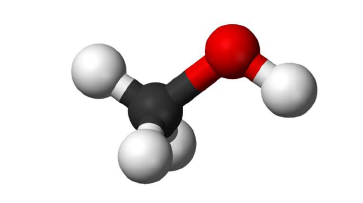
Methanol and DME (DME: dimethyl ether) are used in taxis (methanol) and trucks in China as fuels with low greenhouse gas emissions as part of efforts to achieve a decarbonized society. At the Indy 500, one of the world's three major car races, methanol was used as an additive fuel for racing cars because it burns faster and leads to increase power.
 Source: Shaanxi Province .jp
Source: Shaanxi Province .jp
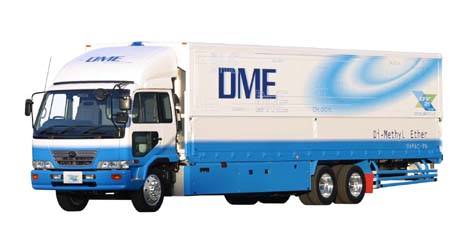
Source: The U.S. Department of Energy
What are the advantages of using methanol as a marine fuel?
Beginning with the completion of Kozan Maru (first-generation) in 1983, MOL started its methanol transport business and today operates one of the world's largest dedicated methanol fleet and is an associate member of the Methanol Institute. In response to growing environmental awareness throughout the value chain, MOL began using methanol, which emits less CO2 and other greenhouse gases, as a marine fuel and adopted it as a new clean energy alternative to heavy oil. In 2016, “Taranaki Sun” (from Mt. Taranaki, known as Mt. Fuji in New Zealand), was completed and was the world's first dedicated vessel to use methanol as a fuel and transport methanol. As of March 2024, MOL operates 5 “dual-fuel vessels” that can operate on both heavy oil and methanol, reaching 48,000 hours of operation using methanol fuel, and continues to reduce greenhouse gas emissions.
Methanol fuel reduces sulfur oxide (SOx) *1 emissions by up to 99%, particulate matter (PM) *2 emissions by up to 95%, and nitrogen oxide (NOx) *3 emissions by up to 80% compared to heavy oil. Meanwhile, MOL has succeeded in reducing our CO2 emissions by approximately 15%, but with the aim of even greater reductions it has newly established the “MOL Environmental circulating model, Methanol Story” initiative.
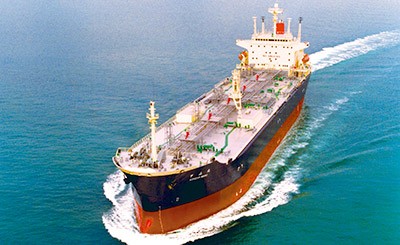 The first "Kozan Maru" delivered in 1983
The first "Kozan Maru" delivered in 1983
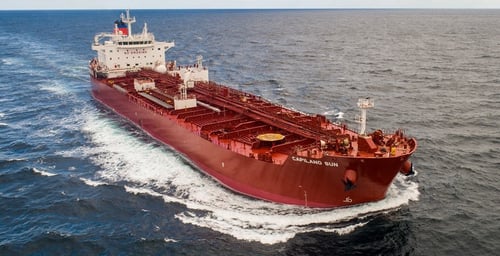 Delivery of Methanol-Duel Fueled Methanol Carrier "Capilano Sun" in November 2021
Delivery of Methanol-Duel Fueled Methanol Carrier "Capilano Sun" in November 2021
*1 Sulfur Oxides (SOx)
Sulfur Oxides are emitted by the burning of fossil fuels such as, coal, oil, and diesel and contribute to respiratory illnesses and acid rain.
*2 Particulate Matter (PM)
Micrometer (µm) sized particles form when volatile components from exhaust gases or oil convert in the atmosphere. It gets deep into your lungs and some may even get into your bloodstream and cause serious health problems.
*3 Nitrogen Oxides (NOx)
Nitrogen Oxides form when Nitrogenous compounds in fuel and Nitrogen in the air are burned and oxidized at high temperatures, resulting in photochemical smog and acid rain.
Capturing generated CO2 and reusing it as fuel
MOL Environmental Circulating Model Methanol Story
As mentioned above, methanol can significantly reduce SOx, PM, and NOx emissions compared to heavy oil, but the challenge is that the reduction of CO2 is smaller compared to other greenhouse gases. Therefore, MOL has launched the “MOL Environmental Circulating Model, Methanol Story” initiative, which aims to achieve carbon neutrality by creating a recycling cycle which CO2 from the operation of methanol fueled vessels, “captures”, “stores”, and “reuses” as fuel again.
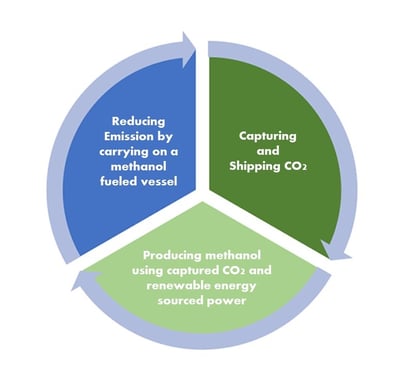 Overview of “Environmentally Sustainable Recycling Methanol Transportation Business
Overview of “Environmentally Sustainable Recycling Methanol Transportation Business
First, lets look at the capture of CO2. Although the technology that directly captures CO2 immediately after methanol is burned has not yet been put into practical use, it is possible to achieve virtually zero emissions by separately capturing an amount equivalent to the amount of CO2 emitted. MOL is engaged in a variety of activities to capture, transport, store, and reuse CO2 from factories and the atmosphere and is accelerating its development of this business by participating in the liquefied CO2 ocean transport business (Norway: Larvik Shipping Co., Ltd.), which liquefies CO2 and transports it, as well as participating in an international think tank.
You can download from here, for more about CCUS (Carbon Capture, Utilization and Storage), one of our initiatives to achieve carbon neutrality.
Turning now to the reuse of CO2 Methanol can be made from CO2 and hydrogen. Hydrogen is produced from fresh water or sea water, but both require energy such as heat and electricity, and emit CO2 to a varying degree. Therefore, the use of renewable energy to produce hydrogen is attracting attention. Hydrogen can be produced by electrolyzing water using electricity obtained from solar power, wind and hydro power, without emitting CO2. Hydrogen produced in this way is called "green hydrogen," and if it is combined with CO2 captured from factories or from the atmosphere, the CO2 emitted during production can be offset. The methanol thus produced in this way is called "green methanol," and can be used as fuel for ships, as well as being supplied as a fuel for other mobilities or as a raw material for them.
The use of methanol, which has a low environmental impact, as a fuel reduces CO2 emissions during transport. In addition, CO2 equivalent to the amount emitted during transport is captured, and the captured CO2 is used to produce green methanol. This sequence of steps reduces CO2 emissions to net zero, which is the new environmentally sustainable business model MOL is aiming for.
A "catalyst" is a substance that speeds up the reaction rate of a particular chemical reaction, which is used to produce methanol, and new catalysts that can produce methanol at low temperatures and pressures have now been developed and are being used.
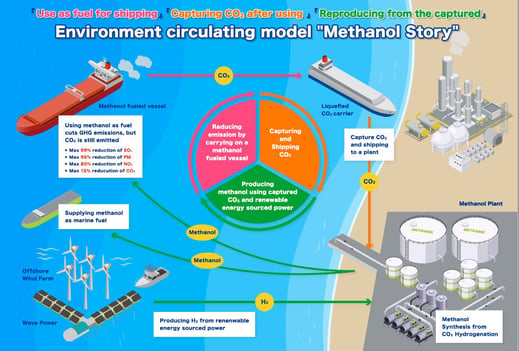 (Environmentally Sustainable Methanol Story)
(Environmentally Sustainable Methanol Story)
Integrating Various Renewable Energy and Environmental Technologies to Create the Future
When methanol is used as a fuel for ships, the CO2 from combustion is reduced, but not zero, to the case of heavy oil. Therefore, we are also aiming to commercialize a technology to capture and store CO2 emitted from ships immediately after combustion. If CO2 captured on board can be combined with green hydrogen to produce methanol again, there is a possibility that an ideal sustainable combustion engine could be created in the near future.
MOL is also involved in many renewable energy activities. One of these is "Offshore Wind Power Energy Business". MOL is involved in a wide range of wind power related businesses, from our investment in offshore wind turbine installation vessels of Cadeler in the Denmark, to the arrangement of ships required for maintenance, site environment surveys, design, logistics, construction, and O&M. We will continue to actively develop “eco-friendly and emission-free” businesses. As we work on a variety of renewable energy and environmental technologies, we will develop an environmentally sustainable business model that integrates them.
Recommended Articles
2022.07.05
- General Shipping
2021.04.13
- Energy
2023.12.19
- General Shipping
2021.08.07
- Eco Friendly
2025.03.18
- General Shipping
Latest Articles
2025.12.09
- Eco Friendly
- General Shipping
2025.12.03
- General Shipping
2025.11.20
- Energy
- General Shipping

CCUS%20DL%20material_FINAL_AT.png)


